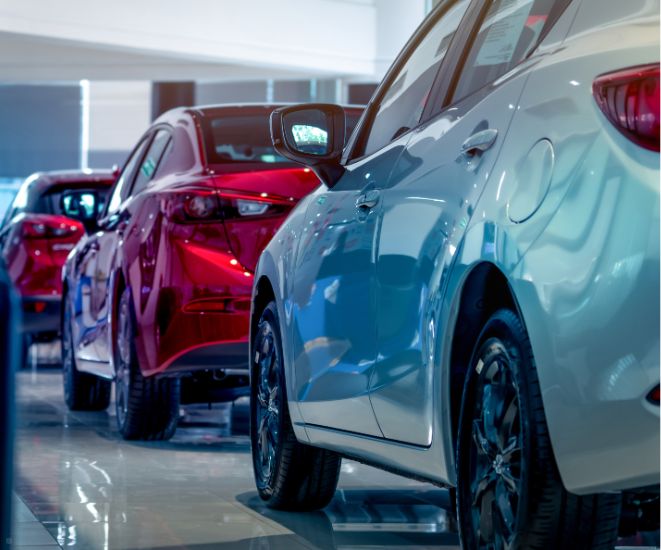Take Advantage of Car Inventory at Dealerships
Across the U.S., car dealerships are facing a new kind of headache: too many vehicles sitting unsold. After years of supply shortages, the pendulum has swung the other way, leaving lots crowded with new and used cars that aren’t moving fast enough.
That oversupply, often called bloated inventory, is squeezing dealer profits and forcing some to slash prices or offer steep incentives just to stay afloat. For buyers, though, it’s a rare window of opportunity. The same market pressures threatening car inventory at dealerships can translate into big savings on both new and used cars.
Why This Can Be Good News for Buyers
When dealers are squeezed by too much inventory, buyers gain leverage. Here’s how to use that leverage smartly:
1. Walk in Knowing the Pressure is On
When a dealer has too many cars, they’re more flexible. Use that as leverage in negotiations. Don’t assume the sticker is firm. Expect willingness to discount, provide incentives or refinance at favorable rates.
2. Target Older or Slow-selling Models
Cars from last year, unpopular trims or color combinations that sit unsold are the ones most at risk. Dealers will be most motivated to clear those out.
3. Time Your Purchase
End-of-month, end-of-quarter or when new model year stock arrives are prime times. Dealers want to hit sales goals or make room. That gives you negotiating strength.
4. Ask About Factory Incentives, Holdbacks and Dealer Cash
Sometimes, the manufacturer gives the dealer hidden incentives (dealer cash, holdback) specifically to move overstock. Ask the dealer to disclose what concessions they're receiving and make sure those flow to you.
5. Shop New and Used Models
Since both new and used inventory are affected, don’t ignore the used side. Dealers may be more motivated to discount used cars too. Use a trade-in, be ready to negotiate inspections, warranties and total price.
6. Be Ready to Walk Away
If a dealer resists reasonable discounting, walk. With bloated inventory, another nearby dealer might be in deeper trouble and more eager to deal.
7. Inspect Carefully and Focus on Total Cost
Even under pressure, good deals must still make sense. Especially with used cars, verify condition, maintenance history, warranty coverage and projected repair costs. For new cars, ensure that incentives and discounts aren’t offset by surprise fees or markups.
What Buyers Should Watch Out For
While inventory pressure creates opportunity, it also invites pitfalls. Here are caveats:
- Some dealers may hide “dealer add-ons," surcharges or accessories to soak up the discount you expect. Be alert.
- Lowering price aggressively might lead to reduced service perks or thinner warranty support.
- Especially on used cars, make sure financing is solid. Don’t let desperation on the dealer’s part force you into a bad loan.
- Watch residual value and resale. A steep discount today may not protect you if resale values collapse later.
How Big Brands Feel the Pressure
Even big names aren’t immune. Here’s how these brands are affected, and what their dealers might be more willing to do under strain:
Audi and BMW (Luxury Segment)
Luxury brands tend to have higher margins, but they also deal with more finicky demand. A premium sedan or SUV that doesn’t sell quickly can hurt the appearance of exclusivity. Dealers may quietly apply incentives, waive certain fees or combine financing incentives to help move overstocked models.
Ford and GM (Volume/Mainstream Brands)
These brands are particularly exposed. Their wide model lineups include trucks, SUVs, sedans and EVs, which means some models may overhang. Dealers under pressure may lean hard on rebates, 0% APR offers or aggressive trade-in deals to push units out.
Kia and Honda (Reliable, High Volume Brands)
These brands often maintain steadier demand, but even they face inventory challenges when a trim or color doesn't move. Dealers might apply “dealer cash" or stack factory incentives to shift the slower models. Because their resale value is already viewed favorably, those discounts can be meaningful.
Looking Ahead
Bloated inventory in the auto industry is not a temporary glitch. It’s a signal that the cycle is shifting. Dealers with weak balance sheets or large holding costs face real stress. For car buyers in 2025–2026, that stress could translate into negotiation power.
By knowing which brands are feeling pressure (Audi, BMW, Ford, GM, Kia, Honda) and being strategic about timing, model choice and negotiation, buyers can capture deals that might be rare in leaner times. Just don’t let desperation overshadow smart buying. Always check the true value, condition and cost before saying yes.
